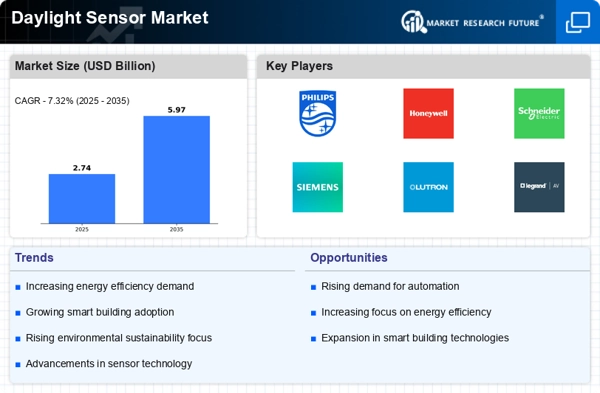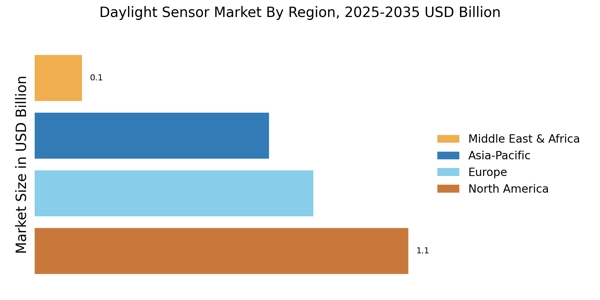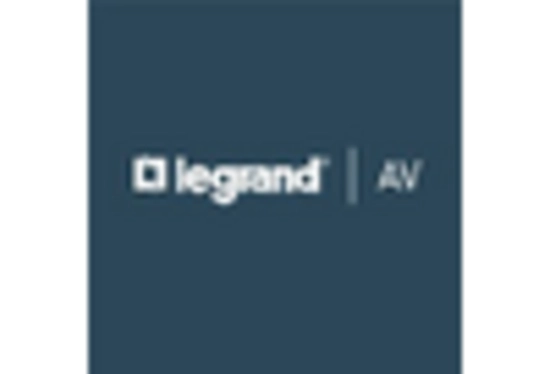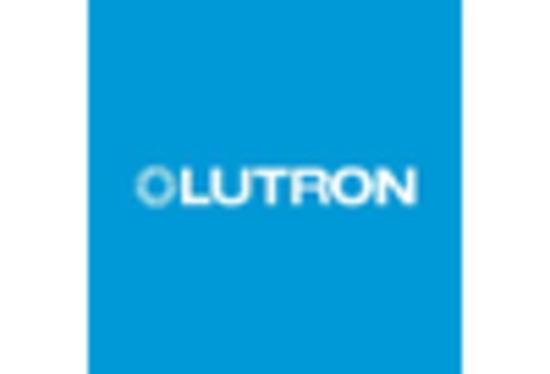Growing Demand for Smart Buildings
The growing demand for smart buildings is a significant driver for the Daylight Sensor Market. As urbanization continues to rise, there is an increasing emphasis on creating intelligent infrastructures that utilize technology to enhance operational efficiency. Daylight sensors play a crucial role in smart buildings by automatically adjusting lighting based on natural light availability, thereby contributing to energy savings and improved occupant comfort. Market analysis reveals that the smart building sector is expected to expand rapidly, with daylight sensors being integral to this transformation. This trend is likely to attract investments and innovations in the daylight sensor segment.
Rising Energy Efficiency Awareness
The increasing awareness regarding energy efficiency is a pivotal driver for the Daylight Sensor Market. As consumers and businesses alike become more conscious of their energy consumption, the demand for technologies that optimize natural light usage is surging. Daylight sensors, which adjust artificial lighting based on the availability of natural light, are seen as essential tools in achieving energy savings. Reports indicate that buildings equipped with daylight sensors can reduce lighting energy consumption by up to 30%. This trend is further supported by government initiatives promoting energy-efficient technologies, which are likely to bolster the adoption of daylight sensors in both residential and commercial sectors.
Government Regulations and Incentives
Government regulations aimed at reducing carbon footprints and promoting energy efficiency are significantly influencing the Daylight Sensor Market. Many countries have implemented stringent building codes that require the integration of energy-efficient technologies, including daylight sensors. These regulations not only mandate the use of such technologies but also offer financial incentives for their adoption. For instance, tax credits and rebates for energy-efficient upgrades encourage property owners to invest in daylight sensors. This regulatory landscape is expected to drive market growth, as compliance with these standards becomes increasingly necessary for new constructions and renovations.
Increased Focus on Sustainable Architecture
The increased focus on sustainable architecture is shaping the Daylight Sensor Market. Architects and builders are increasingly prioritizing designs that maximize natural light while minimizing energy consumption. Daylight sensors are essential components in achieving these sustainable design goals, as they facilitate the efficient use of daylight, reducing reliance on artificial lighting. Market trends indicate that buildings designed with sustainability in mind are becoming more prevalent, with a notable increase in certifications such as LEED. This shift towards sustainable practices is expected to drive the demand for daylight sensors, as they align with the principles of eco-friendly construction.
Technological Advancements in Sensor Technology
Technological advancements in sensor technology are propelling the Daylight Sensor Market forward. Innovations such as improved sensitivity, enhanced connectivity, and integration with smart home systems are making daylight sensors more appealing to consumers. The advent of IoT-enabled sensors allows for real-time data collection and analysis, enabling users to optimize their lighting systems more effectively. Market data suggests that the adoption of smart sensors is on the rise, with a projected growth rate of over 15% annually. This trend indicates a shift towards more sophisticated lighting solutions that not only enhance energy efficiency but also improve user experience.

















Leave a Comment